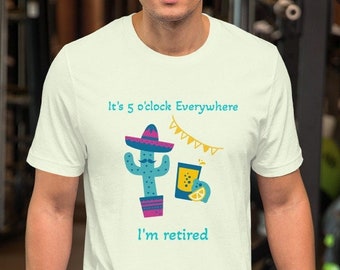 |
| "Cheerleader Brain" - Mascot of the UCI Memory Lab |
One of the things we may want to do when we are retired is to take some risks which we may not have tried when we were younger, still working, and raising a family. In May, 2022, I volunteered to participate in an electrical brain stimulation program at the Working Memory and Plasticity Laboratory at the University of California in Irvine. I admit I was nervous about having electricity shot through my brain, but I also wanted to see if it could help me avoid dementia. Only time will tell if that will be the eventual effect, but I have seen some measurable short-term improvement in my memory, so I already feel that the risk was worth the benefit to me.
Three months later, in August, 2022, I had a third MRI and another battery of memory tests to see if the improvement in my memory had continued to last. Similar to what the researchers did in the second MRI, during the third MRI they flashed words on a screen and I used a hand-held device to indicate which words I had been asked to memorize three months before. I was surprised at how many I still clearly remembered! Then, I took a fresh battery of memory tests and reached a higher level of short-time memory than I had in the past. In other words, my memory was measurably better!
International Interest in the Effects of Electric Brain Stimulation on Memory
The research being done at the Working Memory and Plasticity Lab at UCI is being conducted by Dr. Susanne Jaeggi and has been financed by a variety of organizations including the NIH National Institute on Aging, the National Institute of Mental Health (NIMH), the Swiss National Science Foundation, and the U.S. Department of Defense.
The research collaborators include other American universities such as Stanford, the University of Michigan, and Washington University in the U.S., and research facilities around the world including collaborators at the University of Granada in Spain, Universities of Geneva and Bern in Switzerland, and many other international universities.
Some of the Results of the Electrical Brain Stimulation Studies
While a variety of other researchers have been publishing the results from their studies, here are some of the general effects which have been found by the researchers at the University of California in Irvine:
Improvements in:
Working Memory
Long-term Memory
Visuospatial (reasoning) skills
Scholastic skills (math and reading)
They also learned that the results they found at the end of just one week of training have continued for at least several months after the training was completed, which suggests that the benefits could be long-term. This could be a game changer in reversing mild cognitive decline and might even help postpone dementia!
The researchers also noted that the more effort people put into the training while undergoing brain stimulation, the more they improved. They believe that cognitive strength, like physical strength, must be "exercised" in order to prevent decline.
It was also important that the test subjects be fully engaged during the training. It was not enough to just lay back and have a machine send an electrical current through the brain. The test subjects had to be working to improve their memory. The people who did not improve their memory scores during the week of training had smaller benefits than those who tried hard to improve during the week.
My Personal Experience with Electrical Brain Stimulation
Fortunately, I did not experience any pain or discomfort during the sessions, other than the awkwardness of having electrodes attached to various spots on my skull with the use of a helmet ... and the terrible mess it made of my hair!
In doing the memory tests to the best of my ability, I sometimes experienced feelings of stress, especially when I failed to remember something I thought I should know, or when I felt a moment of confusion during some of the more complex memory games. In pushing the test subject to perform to their maximum, I would assume that some people developed headaches during or after their sessions. However, I felt fine afterwards.
Being subjected to three MRIs in such a short period of time, especially when doing a memory activity during the last two MRIs, was a bit exhausting. Each MRI took approximately an hour, during which time I was in a narrow tube with my head fixated into one position. This procedure was certainly not something I would recommend to anyone with claustrophobia!
 |
| Slides of my actual brain from final MRI at UCI |
It was all worthwhile in the end, because the researchers did see a measurable improvement in my memory compared to when I started the training. My increased memory was also still measurable three months later. Subjectively, I continue to feel as if my thinking has been a bit clearer and quicker since participating in the program. Perhaps there is some placebo effect, but there is no question that the researchers were also able to measure that I had an increased memory after completing the training.
After the final MRI, the researchers also gave me a CD showing slides of my actual brain. They also told me that my brain was symmetrical, and had no obvious evidence of trauma, a medical problem, signs of a stroke, or a tumor. They also told me that some of the other test subjects had brain issues which resulted in them being referred to their personal physicians. However, they said that visually my brain looked fine. That was very reassuring!
How You Can Protect Your Brain
The UCI Working Memory and Plasticity Lab also gave me a brochure which suggested that I continue to take care of my brain by getting enough sleep, staying physically active, eating a healthy diet and being socially engaged. They also recommended continued cognitive engagement which includes taking classes, or learning a new skill such as a foreign language, playing bridge or learning to play a musical instrument.
Personally, I believe that doing research on a wide variety of topics, like the ones I cover in this retirement blog, Baby-Boomer-Retirement.com, as well as using my creativity to design products for my Etsy store have both been healthy ways to continue to practice the types of cognitive engagement they recommend. I am constantly required to learn new skills in order to effectively manage these websites. I also continue to practice a variety of word and memory games. All these activities give me hope that I might be able to avoid dementia in the future.
How to learn more
If you are interested in following this research or learning more about what has been discovered by cognitive researchers from around the world, you can go to the website of the UCI Working Memory & Plasticity Lab at:
The website contains a wealth of fascinating information, including links to articles which have been published by different researchers, as well as a very interesting video you can watch on the home page. It shows examples of some of the memory games participants were asked to perform. If I receive additional information about the results of this project, I will write future posts about it in this blog.
Enjoyed this post? Never miss out on future posts by following us. You will receive a weekly email with the most current post.
Disclosure: This blog may contain affiliate links. If you decide to make a purchase from an Amazon ad, I'll make a small commission to support this blog, at no extra cost to you.
You are reading from the blog: http://www.baby-boomer-retirement.com
Photo credit: UCI Memory Lab, Etsy







